Hello,
When I was looking at the dashboard data(Home->Performance), I found that the calculation of the flow’s $/Recipient(RPR) indicator seemed to be different from what was stated in this document. In the documentation, the numerator is GMV and the denominator is uniq emails. But I observed from the actual data that the denominator of the calculation presented in the dashboard is the total number of emails delievery, not uniq emails. I just want to check whether my observation is right.
Below is my calculation process.
Step1, I select the date range between 20221206 and 20221213 (last 7DAYS). And then, I select a flow, which revenue(gmv) is $11059 and $/recipient is $3.92.
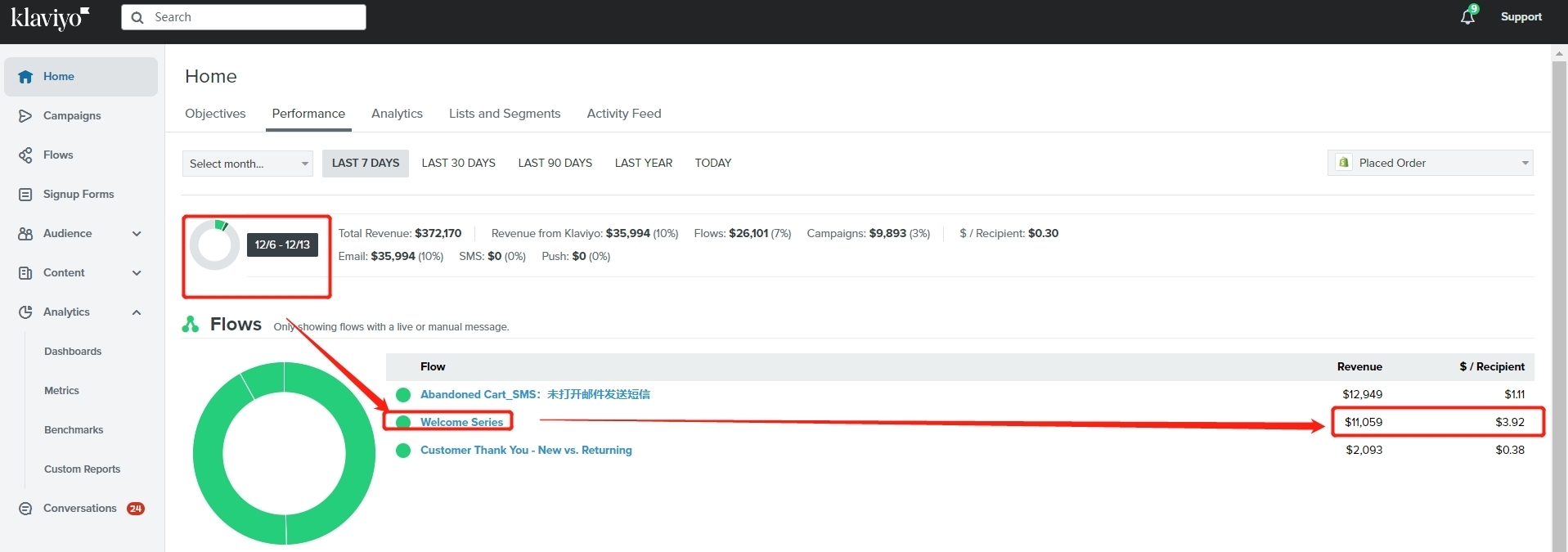
Step2, In such date range, I click such flow and check the detail data. This flow has three scene, I record each scene’s GMV and email delievery count
1)scene1, gmv 10374.31, email delievery 921
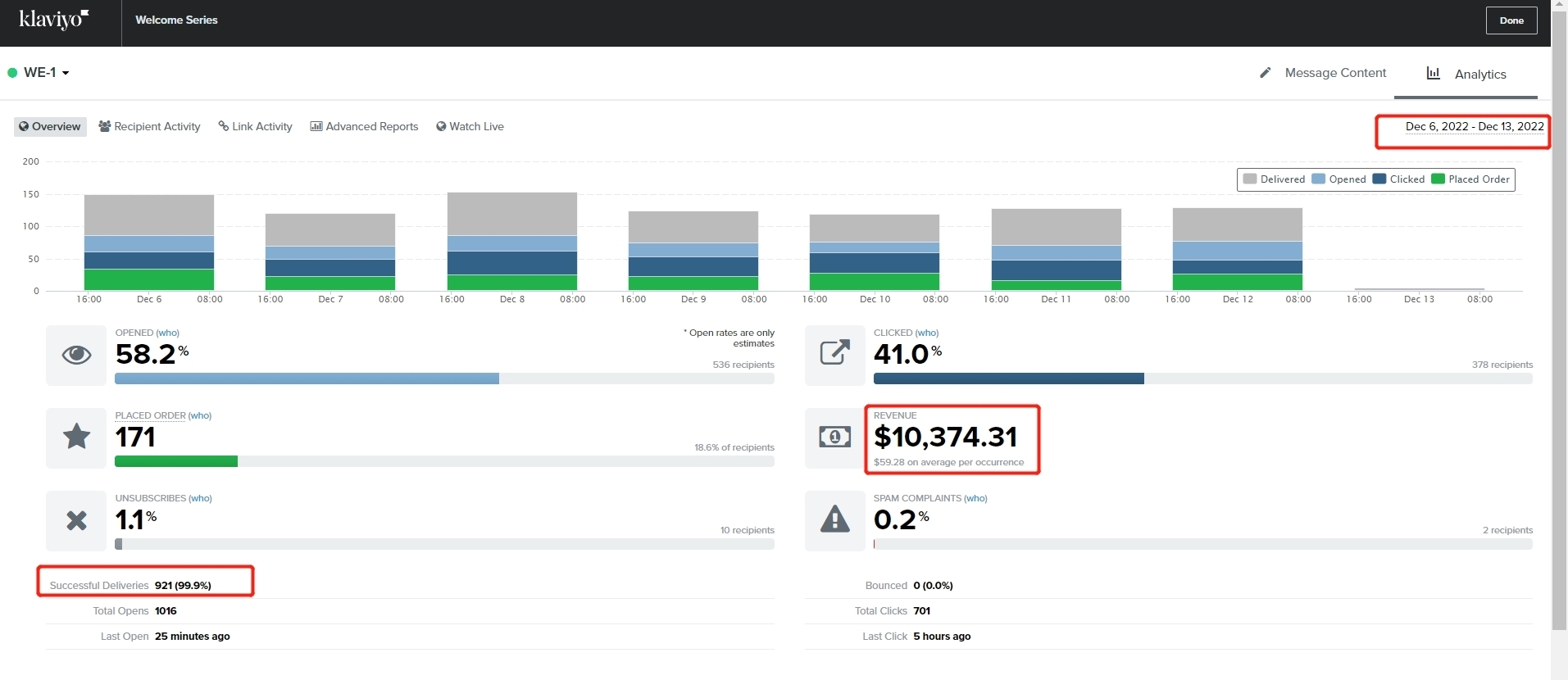
2)scene2, gmv 215.31, email delievery 909
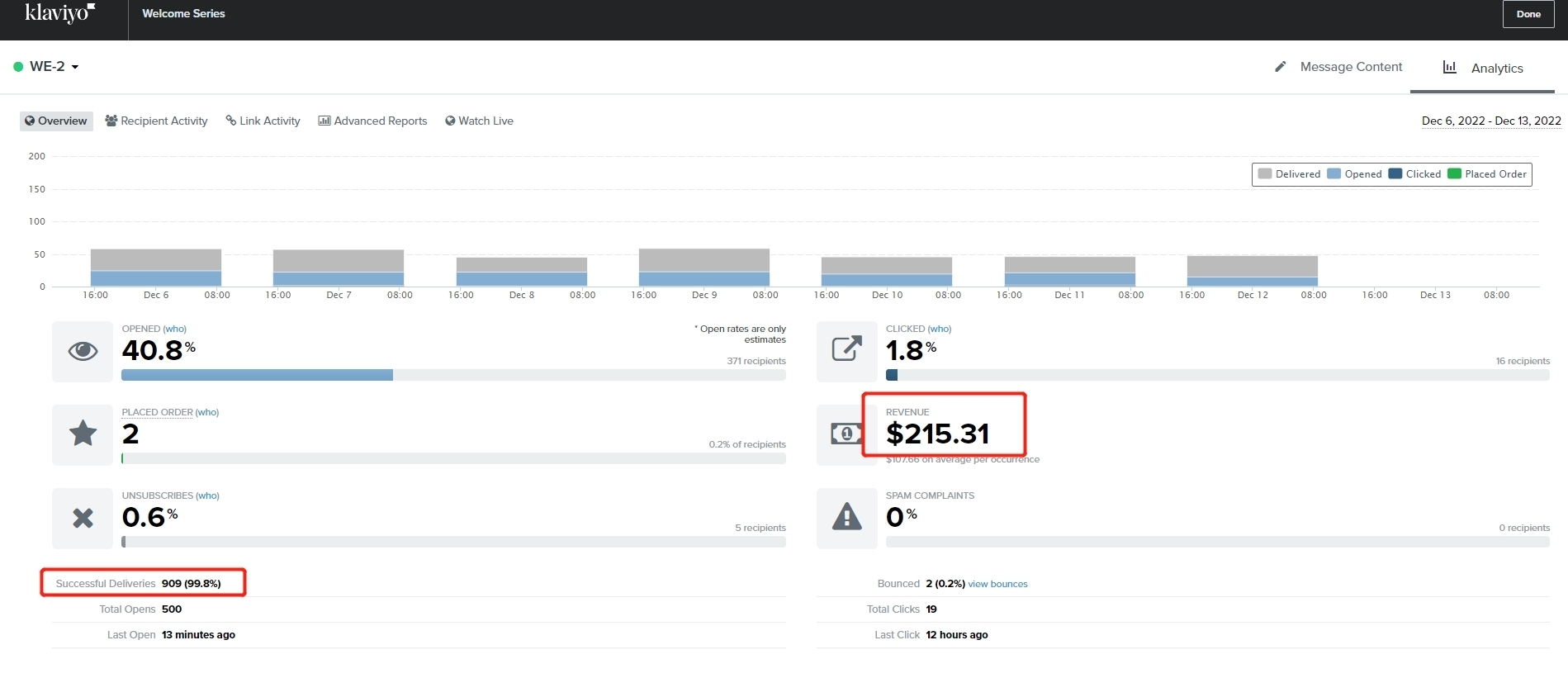
3)scene3, gmv 469.02, email delievery 993
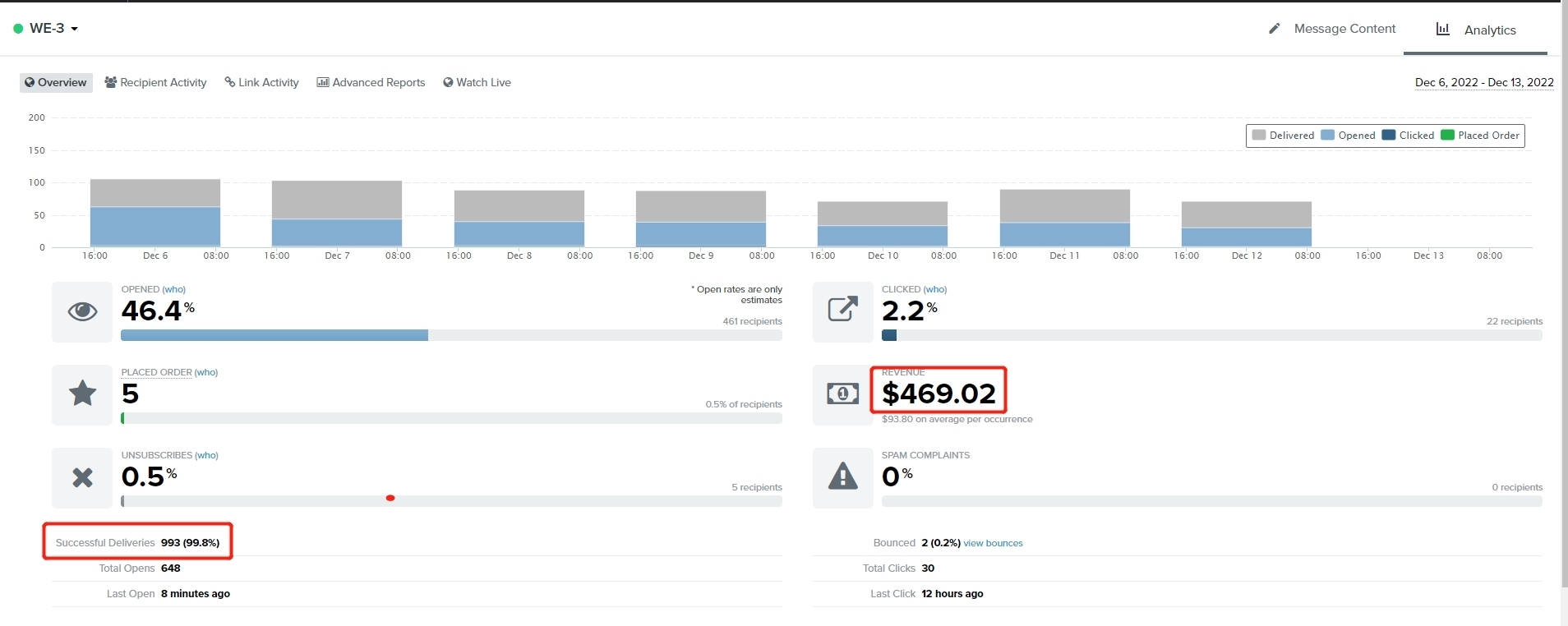
4)after record the data, I do the calculation
sum_gmv = 10374.31 + 215.31 + 469.02 = 11058.64
sum_email_delievery = 921 + 909 + 993 = 2823
sum_gmv / sum_email_delievery = 11058.64 / 2823 = 3.91733
step3, data check
in dashboard, the gmv is 11059 and $/recipient is 3.92, shown in pic1.
in flow detail, the gmv is 11058.64(round to 11059) and gmv/delievery=3.91733(round to 3.92)
it seems $/recipient is the same as $/delievery. In my opinion, recipient is uniq-delievery-emails, not sum-delievery-emails, like the document statemented.
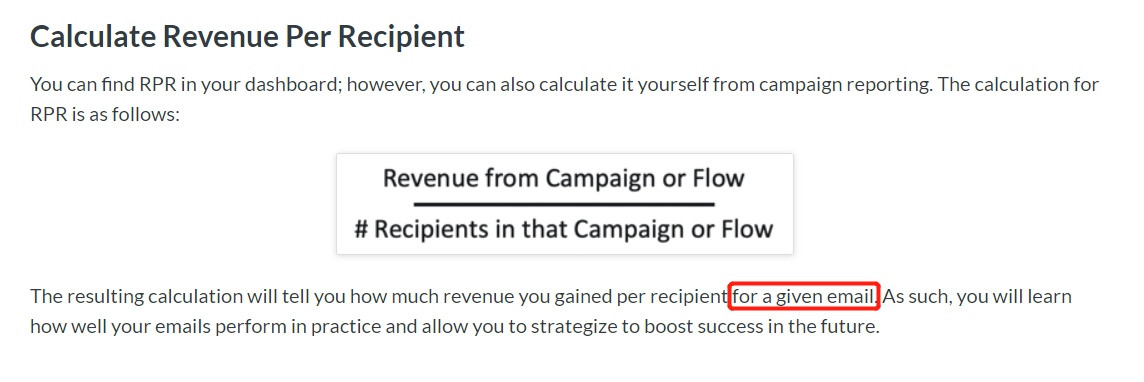
I just want to check whether my observation is right, and why the difference happen between dashboard data and document.
